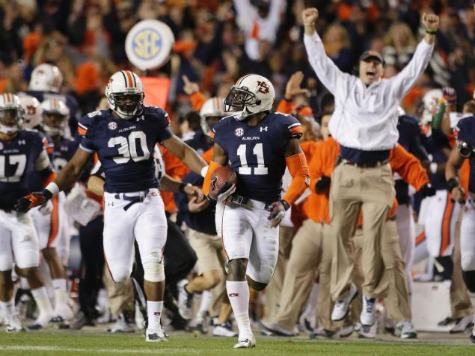The advent of cable television offered universities vast new opportunities to profit from football and basketball, and the large and most lucrative programs have consolidated into five major conferences. Those dominate the Bowl Championship Series in football and the NCAA tournament in basketball and earn huge sums.
Northwestern football earned an $8 million profit from $30 million in revenue during the 2012-13 season and is hardly a perennial powerhouse like Notre Dame or the University of Alabama.
Universities monopolize the market for athletes’ services through the NCAA, which mandates players are amateurs and cannot be paid salaries. This denies athletes fair compensation for the value their labor and unique talents create through ticket sales, concessions, and TV rights.
Coaches earn millions, universities divert profits to subsidize other activities, and fans get cheap entertainment. Universities twist admissions standards and faculty bend grades to deliver winners and appease wealthy donors.
Winning teams help universities raise funds but most money stays in athletic departments. And I know from hard experience running a major academic program, money raised by sports teams preempts sources of support for educational activities.
In exchange for scholarships for tuition, room and board, and limited expenses, student athletes are expected to train year round and work 40- to 60-hours a week during training camp and the regular season. Their lives are very tightly controlled–when they study, social media activities, and the like. Often this impairs their development into fully functioning adults.
Star athletes like Alabama quarterback AJ McCarron, who delivered two national championships, are simply worth millions more than the scholarships and are flat out exploited.
Most athletes, unlike McCarron, will not enjoy a professional career, but instead leave college after five years with a degree in a soft major that has little value in today’s tough jobs market or no diploma at all. Many leave with medical conditions from overtraining and injuries but no financial assistance to pay for a lifetime of care.
Recently, the National Labor Relations Board ruled Northwestern University football players are employees and can vote to form a union. The football players are not necessarily seeking salaries as much as better opportunities to complete degrees and get additional health insurance.
Title IX requires whatever additional medical and educational benefits Northwestern football players–and those at other universities forming unions negotiate–be extended to athletes in other sports with equal aggregate amounts spent on men and women. The expense could easily destroy the financial viability of many athletic programs, and cause universities to drop many more men’s sports to maintain gender balance.
The NLRB ruling only applies to private universities, but public institutions would be compelled by competition to offer similar benefits to top athletes.
Perhaps most significantly, the NLRB’s decision will greatly aid plaintiffs in two pending antitrust suits that seek to break NCAA rules prohibiting salaries and permitting universities to use player images and names in endorsements and promotions without compensation.
Those suits have the potential to do to college sports what free agency did to professional football, baseball and basketball, after the courts struck down owners’ monopoly practices similar to current NCAA rules.
The top 30 or 40 programs in each college sport will be able to pay top salaries to attract the best athletes, and the other universities will not be able to effectively compete.
Title IX would compel universities to pay women athletes what they pay men in football, basketball, and other sports, and this would bankrupt virtually all Division I athletic programs.
The solution may be to permit the top 30 or 40 major universities to form football and basketball teams “affiliated” but legally separate from their institutions. Those private corporations could partner with a major pro franchise, be financed by game day revenues, TV rights and contributions from their pro team, and pay universities rent and royalties.
Pay those athletes, offer the opportunity to earn a degree, but don’t require them to enroll if they are not capable or disinclined. By disengaging those elite college football and basketball players from university activities, the potential to corrupt admissions and faculty would be greatly reduced, and a broader range of gifted young athletes would have the opportunity to develop their talents.
Other athletic programs could continue within the university structure as amateur pursuits–enhancing student opportunities for a balanced education.
All the other universities could have walk-on programs in football and basketball for genuine amateurs, and in a manner similar to the Ivy League schools and military academies, compete at a level that compliments a decent university education.
After all, a quality education is why young people should go to college.
Peter Morici is a professor of business at the University of Maryland, which is leaving the Atlantic Coast Conference to join the Big Ten, and a nationally published columnist. He tweets @pmorici1

COMMENTS
Please let us know if you're having issues with commenting.